Samyang 100 mm f/2.8 ED UMC MACRO
3. Build quality
In the photo below the tested lens is positioned between the Samyang 2/135 and the Canon EF 100 mm f/2.8L IS USM Macro. As you can notice the dimensions of the Canon and the Samyang are very similar indeed.
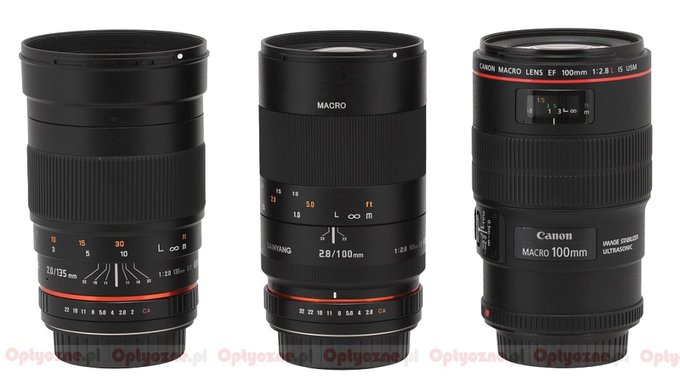 |
Please Support UsIf you enjoy our reviews and articles, and you want us to continue our work please, support our website by donating through PayPal. The funds are going to be used for paying our editorial team, renting servers, and equipping our testing studio; only that way we will be able to continue providing you interesting content for free. |
- - - - - - - - - - - - - - - - - - - - - - - - - - - - - - - - - - - - - - - - - - - - - - - -
The Samyang 100 mm f/2.8 ED UMC Macro starts with a metal mount which surrounds a rear element, 27 mm in diameter. That element is situated on the same level as the mount with the focus set at infinity. When you pass to the minimum focusing distance it hides inside the barrel almost two centimeters deep. The front element stays in the same place all the time which means the focal length of the lens changes. While hiding inside the barrel the rear element reveals a nicely matted and properly blackened tube. There are no slits or gaps so dirt won’t invade the interior of the lens.
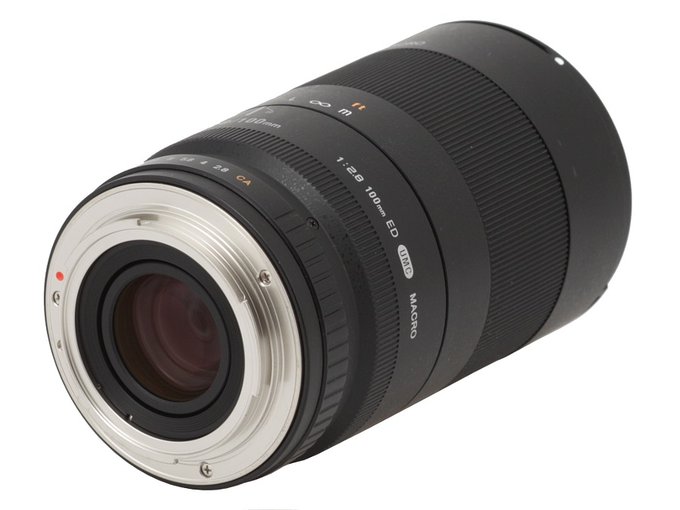 |
The Canon EF version we tested is devoid of contacts so the lens doesn’t send any info concerning the aperture value and the focal length to the camera. The aperture itself can be controlled mechanically, by using a ring situated on the lens. It’s a pity only the Samyang with the Nikon F mount has been equipped with contacts so far. It seems the producer has a lot to catch up in this area.
The proper body of the lens starts with a small, immobile ring which soon turns into an aperture ring, 8 mm wide, moving every 0.5 EV step.
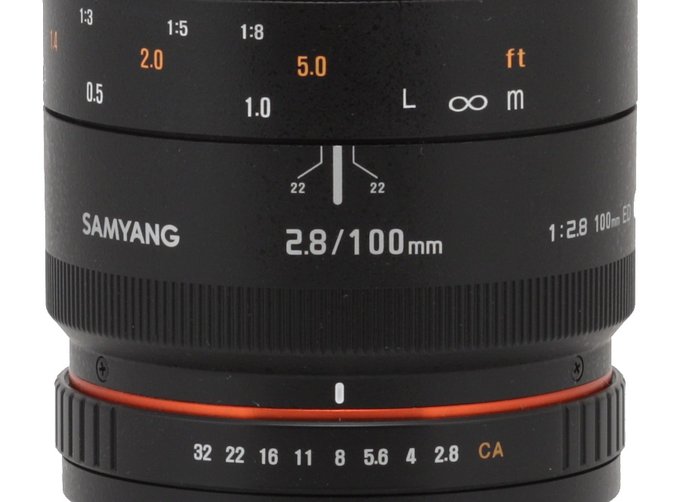 |
The next part of the casing consists of a red stripe which doesn’t move and turns pretty soon into another immobile part with the name and the parameters of the lens along with a depth of field scale at f/22. On the other side of it you can also notice information that the lens was produced in Korea.
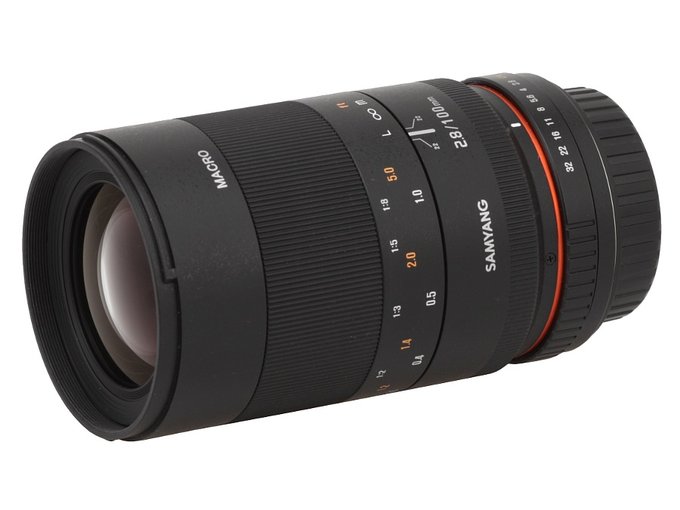 |
A manual focus ring, as wide as 47 mm, is the biggest part of the casing. Most of its surface is covered by rubber ribbing under which there is a distance scale expressed in feet and metres. The ring itself works smoothly and is well-damped; running through the whole distance scale needs a turn through an angle of about 180 degrees. In itself such a value is not low (but compared to 360 degrees of the Zeiss Macro-Planar T* 100 mm f/2 it is nothing to admire) but the working range layout is here the biggest problem. We understand it is a macro lens and that part of the range was especially important for the producer but it should be remembered that from time to time you would like to take a photo from a bigger distance too. In such an instance, however, the proper focusing would be virtually a miracle because the range from one meter to infinity is covered by merely 30 degrees of the ring’s working scale. What’s more, when we tried astronomical photography we were able to get the best images of stars exactly at the very end of the range; additionally it seemed that if the ring could be moved even a bit further the image at infinity would improve too. Even if it isn’t true, the lack of range after the infinity – which would allow you to compensate the temperature changes and to work in other wavelengths’ ranges – should be considered a flaw.
Behind the manual focus ring there is a fixed fragment of the casing with an inscription “MACRO”; it ends with a lens hood bayonet.
The front element of the lens is 47 mm in diameter, immobile and surrounded by a non-rotating filter thread, 67 mm in diameter.
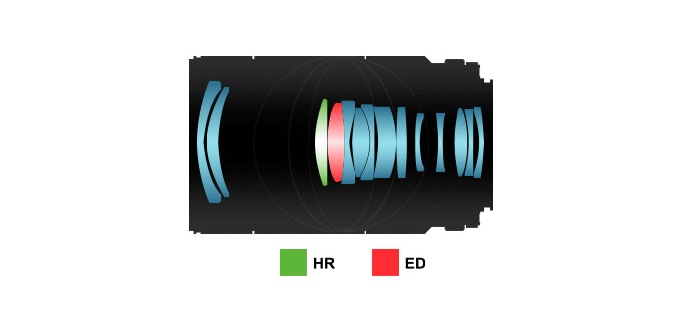 |
The optical design of the Samyang 100 mm f/2.8 ED UMC MACRO consists of 15 elements positioned in 12 groups. Among them there is one HR element, made of glass with a high refraction index, and also one made of low dispersion ED glass. The lens also boasts UMC anti-reflection coatings. Inside you can find a round aperture with nine diaphragm blades which can be closed down to a value of f/32.
Buyers get both caps, a hood and a soft pouch.
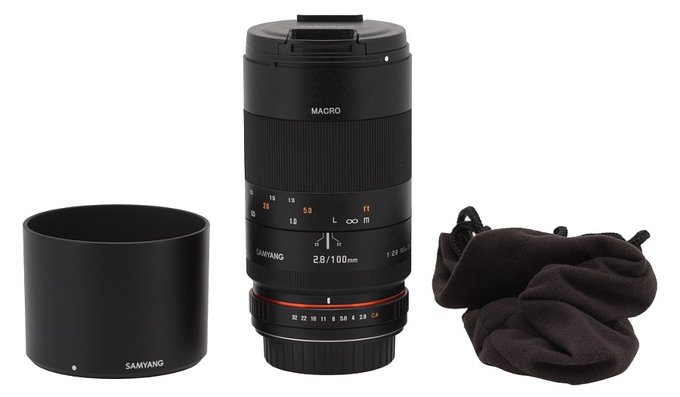 |






